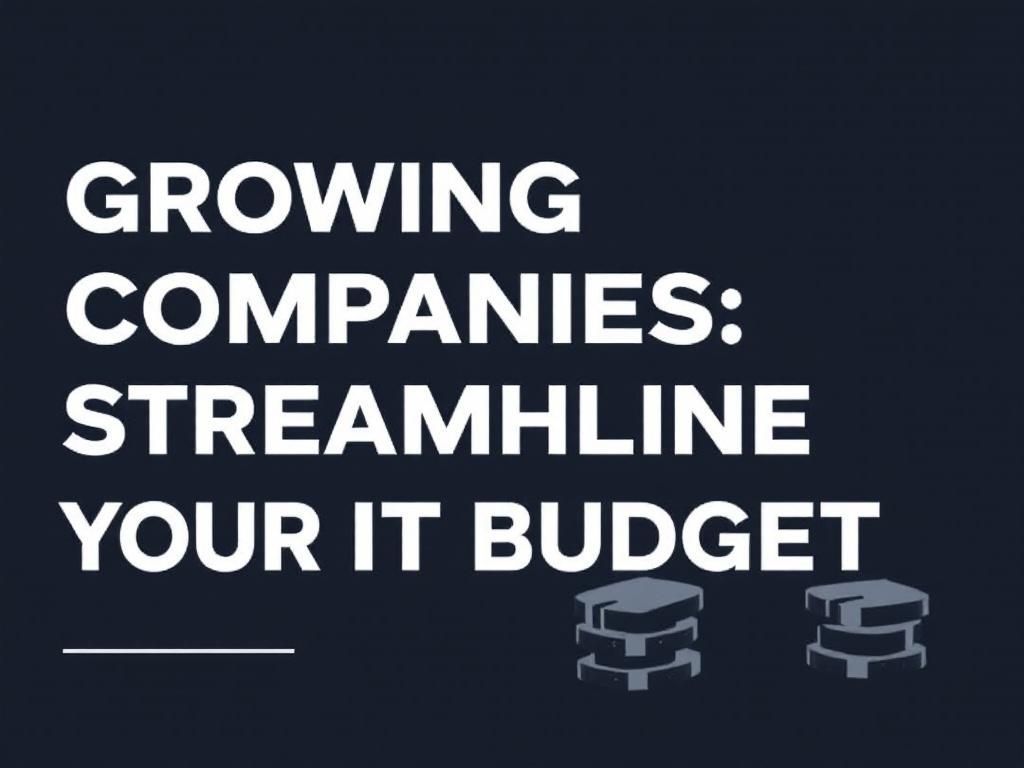Streamline Your IT Budget for Growing Companies
Discover effective strategies to optimize your IT budget and drive growth for your company with cost-saving techniques and best practices.

In today’s fast-paced business landscape, technology is at the heart of every organization, especially for growing companies. As businesses expand, so do their IT needs. Efficiently managing an IT budget becomes crucial not only to support growth but also to ensure sustainability and flexibility. This article delves into effective strategies and best practices to streamline IT budgets for growing companies without compromising on quality or performance.
Table of Contents
Understanding the Importance of an IT Budget
A well-structured IT budget serves multiple purposes:
- Aligns IT expenditures with business goals.
- Helps identify critical technology investments.
- Facilitates cost control and forecasting.
- Enables better decision-making regarding IT resources.
For growing companies, understanding the importance of an IT budget can guide them in prioritizing technology spending that aligns with their strategic objectives.
Key Strategies to Optimize Your IT Budget
1. Assess Current IT Expenditures
Before making adjustments, it’s essential to analyze your current IT spending. Consider the following:
- Identify all IT-related expenses, including hardware, software, services, and staffing.
- Evaluate the necessity and ROI of each expenditure.
- Look for non-essential items that can be cut or deferred.
2. Prioritize Technology Investments
Not all technology investments are created equal. Prioritize expenditures based on their potential impact on the business:
| Investment Type | Potential Impact |
|---|---|
| Cloud Computing Solutions | Scalability & Cost-Efficiency |
| Cybersecurity Enhancements | Risk Management & Compliance |
| Collaboration Tools | Improved Team Productivity |
| Data Analytics Platforms | Informed Decision-Making |
3. Embrace Cloud Solutions
Cloud computing has transformed IT budgets by reducing upfront costs:
- Allows for pay-as-you-go models.
- Reduces the need for on-premises infrastructure.
- Offers flexibility to scale resources as needed.
By embracing cloud solutions, businesses can optimize their IT budgets and respond swiftly to changing demands.
4. Implement IT Asset Management (ITAM)
IT Asset Management helps track and manage IT assets throughout their lifecycle. Key benefits include:
- Improved visibility into asset utilization and performance.
- Enhanced cost management through better resource allocation.
- Increased compliance with licensing agreements.
Innovative Approaches to Budgeting
1. Zero-Based Budgeting
Zero-based budgeting requires that every expense be justified for each new period, rather than only explaining the changes from the previous budget. This approach encourages:
- More careful evaluation of all costs.
- Elimination of unnecessary expenses.
- Alignment with current business goals.
2. Agile Budgeting
As market conditions change rapidly, an agile budgeting approach allows for flexibility and real-time adjustments. Some practices to adopt include:
- Regularly reviewing and updating the budget based on performance metrics.
- Involving cross-functional teams in the budgeting process.
- Utilizing software tools that allow for dynamic budget adjustments.
Common Pitfalls to Avoid
While streamlining your IT budget, be wary of common pitfalls that can derail your efforts:
- Underestimating Future Needs: Failing to account for growth can lead to overspending or insufficient resources.
- Ignoring Employee Input: Employees who use technology daily can provide valuable insights into what tools are essential.
- Neglecting Vendor Relationships: Building strong partnerships with vendors can lead to better pricing and service agreements.
Tools and Resources for Budget Management
To manage your IT budget effectively, consider leveraging the following tools:
| Tool | Description |
|---|---|
| IT Budgeting Software | Streamlines budgeting processes and provides analytics. |
| Asset Management Tools | Tracks IT assets and their costs throughout their lifecycle. |
| Cloud Cost Management Platforms | Helps monitor and optimize cloud spending. |
| Collaboration Software | Facilitates communication across departments regarding budgeting. |
Conclusion
Streamlining your IT budget is essential for supporting growth in a rapidly evolving technology landscape. By assessing current expenditures, prioritizing investments, and adopting innovative budgeting strategies, companies can create a flexible and effective IT budget that aligns with their objectives. As you move forward, keep an eye on industry trends and continuously seek ways to optimize your technology spending, ensuring that your company remains competitive and agile in the face of change.
FAQ
What are the benefits of streamlining my IT budget for a growing company?
Streamlining your IT budget can lead to significant cost savings, improved resource allocation, enhanced technology efficiency, and the ability to reinvest in growth initiatives.
How can I identify unnecessary IT expenses in my budget?
Start by conducting a thorough audit of your current IT expenditures, evaluating each cost against its business value and identifying areas where expenses exceed benefits.
What strategies can I use to optimize my IT spending?
Consider strategies such as adopting cloud solutions, consolidating software licenses, implementing automation tools, and renegotiating contracts with vendors to optimize IT spending.
How often should I review my IT budget?
It’s advisable to review your IT budget quarterly to ensure alignment with company goals, adapt to changing business needs, and identify new opportunities for cost savings.
What role does technology play in scaling a company’s operations?
Technology enables scalability by automating processes, enhancing communication, improving data management, and providing tools that support remote work and collaboration.
Can outsourcing IT services help in budget management?
Yes, outsourcing IT services can reduce overhead costs, provide access to expertise, and allow your team to focus on core business activities, ultimately leading to better budget management.
